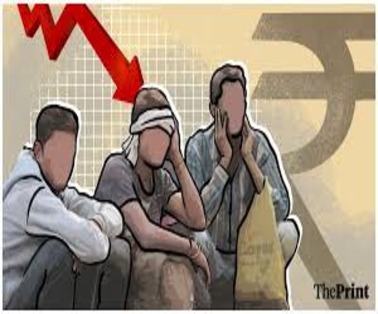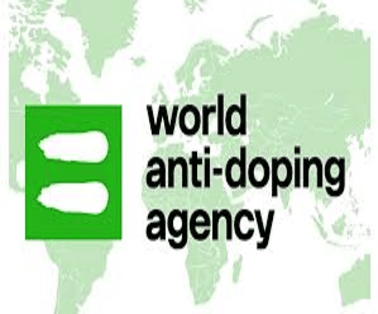Global Multidimensional Poverty Index 2023 was released by “United Nations Development Programme (UNDP)” and “Oxford Poverty & Human Development Initiative (OPHI)”.
Key Findings from the Global Multidimensional Poverty Index (MPI) 2023
- Globally, 1.1 billion people (18% of the total population) out of 6.1 billion people, are acutely multidimensionally poor and live in acute multidimensional poverty across 110 countries.
- Sub-Saharan Africa has 534 million poor and South Asia has 389 million.
- These two regions are home to approximately five out of every six poor people.
- Children under 18 years old account for half of MPI-poor people (566 million).
- The poverty rate among children is 27.7%, while among adults it is 13.4 %.
India’s Progress in Poverty Reduction
- Some 415 million Indians escaped poverty between 2005-06 and 2019-21
- Incidence (of multidimensional poverty) fell from 55.1 per cent to 16.4 per cent
- The MPI measures “interlinked deprivations in health, education and standard of living that directly affect a person’s life and wellbeing”.
- India did not just reduce poverty at an impressive rate. India progressed significantly in all the three deprivation indicators: Health, education and the standard of living. Decline in poverty has been equal as well, cutting across regions and socio-economic groups.
- The poorest states and groups, including children and people in disadvantaged caste groups, had the fastest absolute progress
- Of the above three deprivations that together measure multidimensional poverty, “standard of living” contributed 39.7 per cent — the maximum among the three — to poverty in India.
- Health deprivation contributed 32.2 per cent and education deprivation 28.2 per cent.
- India still has more than 230 million people who are poor.
What is Global Multidimensional Poverty Index?

Global Multidimensional Poverty Index Indicators
|
Dimensions of Poverty |
Indicator |
Deprived if living in the household where… |
Weight |
|
Health |
Nutrition |
Any adult under 70 years of age or any child for whom there is nutritional information is undernourished. |
1/6 |
|
Child mortality |
Any child under the age of 18 years has died in the family in the five-year period preceding the survey. |
1/6 |
|
|
Education |
Years of schooling |
No household member aged ‘school entrance age + six years or older has completed at least six years of schooling. |
1/6 |
|
School attendance |
Any school-aged child is not attending school up to the age at which he/she would complete class eight. |
1/6 |
|
|
Standard of living |
Cooking Fuel |
The household cooks with dung, wood, charcoal or coal. |
1/18 |
|
Sanitation |
The household’s sanitation facility is not improved (according to SDG guidelines) or it is improved but shared with other households. |
1/18 |
|
|
Drinking Water |
The household does not have access to improved drinking water (according to SDG guidelines), or improved drinking water is at least a 30-minute walk from home, round trip. |
1/18 |
|
|
Electricity |
The household has no electricity. |
1/18 |
|
|
Housing |
At least one of the three housing materials for roof, walls and floor are inadequate: the floor is of natural materials and/or the roof and/or walls are of natural or rudimentary materials. |
1/18 |
|
|
Assets |
The household does not own more than one of these assets: radio, television, telephone, computer, animal cart, bicycle, motorbike or refrigerator, and does not own a car or truck. |
1/18 |
A person is multidimensionally poor if she/he is deprived in one third or more (means 33% or more) of the weighted indicators (out of the ten indicators). Those who are deprived in one half or more of the weighted indicators are considered living in extreme multidimensional poverty.
Multidimensional Poverty Index and SDGs
The measure of acute multidimensional poverty also keeps in check the performance of countries in the Sustainable Development Goals (SDGs) Targets:
- The ‘Health’ dimension covers the following SDGs areas:
- SDG 2 – Zero Hunger
- SDG 3 – Health and Well-Being
- The ‘Education’ dimension covers the following SDGs area:
- SDG 4 – Quality Education
- The ‘Living Standards’ dimension covers the following SDGs areas:
- SDG 1 – No Poverty
- SDG 6 – Clean Water and Sanitation
- SDG 7 – Affordable and Clean Energy
- SDG 11 – Sustainable Cities and Communities
To Download Monthly Current Affairs PDF Click here
Get Inspiration from CLAT 2025 Topper
Click here to get a free demo
Everything About CLAT 2025
Global Multidimensional Poverty Index FAQs
What is the Global Multidimensional Poverty Index (MPI) 2023?
The Global Multidimensional Poverty Index (MPI) 2023 measures poverty across three key dimensions: health, education, and living standards, highlighting acute deprivations affecting billions globally.
How many people live in multidimensional poverty globally in 2023?
In 2023, 1.1 billion people (18% of the global population) live in multidimensional poverty across 110 countries.
Which regions have the highest levels of multidimensional poverty?
Sub-Saharan Africa and South Asia have the highest levels of multidimensional poverty, with 534 million and 389 million poor, respectively.
What is the poverty rate among children?
27.7% of children under 18 years old live in multidimensional poverty, accounting for half of the global poor.
How has poverty in India changed between 2005-2021?
India reduced multidimensional poverty from 55.1% to 16.4% between 2005-2021, with 415 million people escaping poverty.



